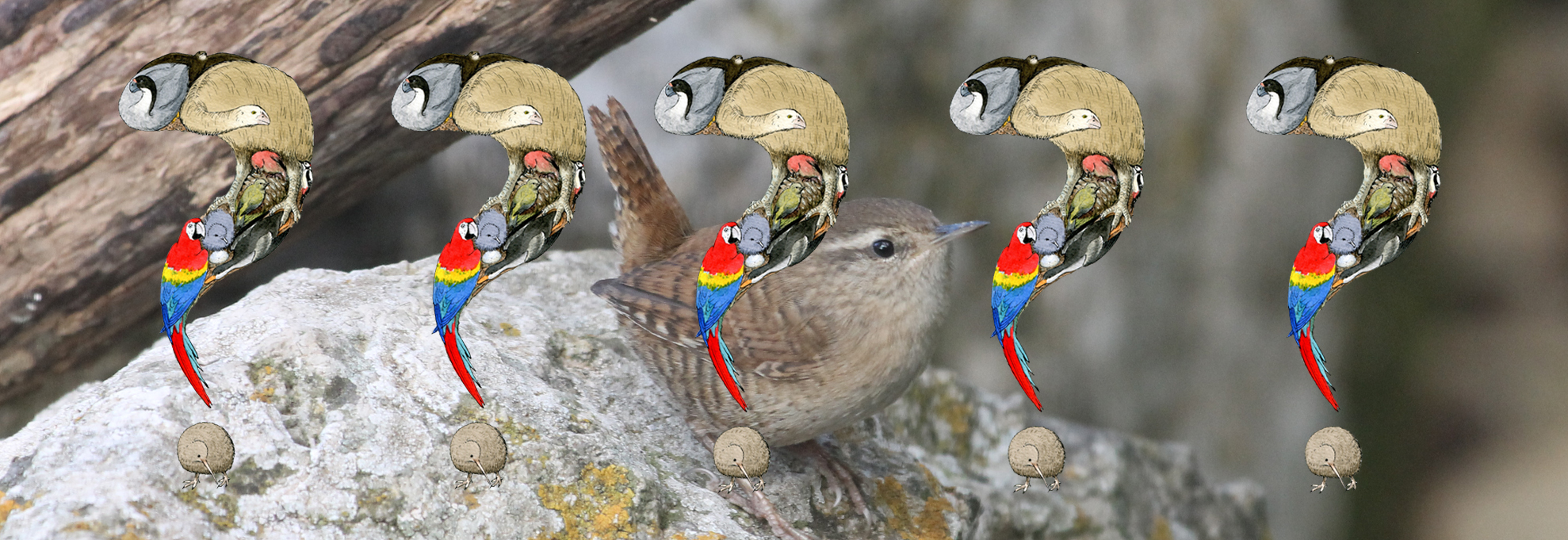 Photo: Jordi Muntaner. Question marks: Aina Bonner
Photo: Jordi Muntaner. Question marks: Aina Bonner
Solution to Challenge 7
[This Challenge has not been as well received as the previous ones, although skeletons and bones are important to understand… Since it has been a bit complicated, “to compensate” the next Challenge will be simpler].
Let’s go to the solution to Challenge 7:
The birds that have carpometacarpi larger than the humeri are the Apodiformes (swifts) and the Trochiliformes (hummingbirds). They are two very close orders, and sometimes (in the past) hummingbirds have been considered Apodiformes. Both have very short and robust humeri. They do not resemble the humeri of other birds. The ulnae are robust, but not as specialized as the humeri. The bones of the hand (carpometacarpus + phalanges) make up 60% of the length of the wing skeleton!
It is thought that the thick and short humeri of swifts and hummingbirds must be related to their ability to do very rapid wing beats. If you compare them to us humans, it’s extraordinary to think that these birds have humeri (which everyone knows how big are in humans) smaller than the equivalent of our carpus (wrist bones) and metacarpus (palm of the hand bones).

Source: Kaiser (2007). The Inner Bird. Anatomy and Evolution.

Source: Dial (1992): The Auk, 109: 864-875.
References
DIAL, K.P. 1992. Avian forelimb muscles and nonsteady flight. Can birds fly without using the muscles in their wings? The Auk, 109: 864-875.
KAISER, G.W. 2007. The Inner Bird. Anatomy and Evolution. UBC Press, 386 pages.
See also:
https://sketchfab.com/ufherps/collections/forelimb-diversity-1e702f872e1145d5ad85d765d3c54939
(this page shows the wing bones of six species of birds, including a swift; in blue are the humeri and in red are the bones of the hands, the first of which is the carpometacarpus)
